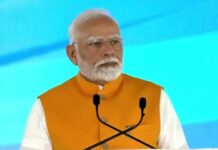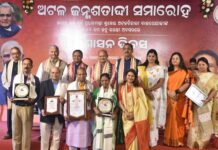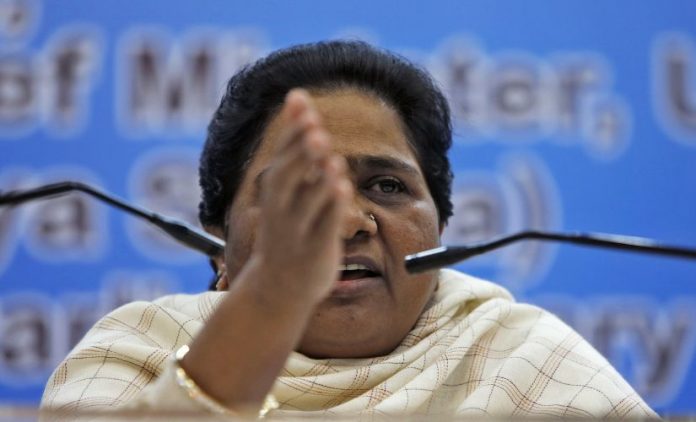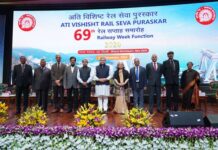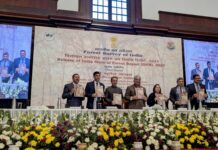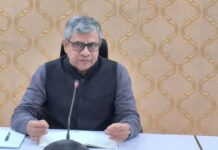Bahujan Samaj Party supremo Mayawati appears as the least seriously taken politician in the country. The former vice-president of the BJP in Uttar Pradesh, Dayashankar Singh branded her a “prostitute” a few days ago. Once can also recall the case of BJP spokesperson Shaina NC, remarking in 2014 that she was confused if Mayawati was a “he or she” – saying something only a sexist man would say but making it a hundred times more pathetic by being a woman. Setting aside the sexism and aesthetic “requirements” of no one less than Madhubala or Rakhi Sawant deserving to be the Prime Minister, Mayawati is perhaps the most hated politician in the eyes of the mainstream media and political class.
The aforementioned comments were only a drop in the ocean of insults hurled at the BSP leader throughout her career. In addition, she has been portrayed Certain female politicians, such as Sonia Gandhi and Shiela Dikshit of the Congress, Brinda Karat of the CPI(M) and Sushma Swaraj of the BJP, are treated as states(wo)manly enough to be regarded as major politicians in their own right – having the agency to form their own views (nevermind that Sushma Swaraj threatened to shave her head if Sonia Gandhi became Prime Minister). Mayawati is not the typical elite English speaking politician.
Other major female politicians, such as Jayalalithaa, Mayawati and Mamta Bannerjee are treated as loud troublemakers, branded Amma, Behenji and Didi respectively — their agency reduced to all whim and no intellect, despite them being the autocratic heads of their respective parties.
The overwhelming remainder of female politicians is, it is futile to disclose, treated as cattle that provide voice votes or press the roll call when required. I am sorry to say, the BJP has historically abetted that very culture of sexism that former HRD Minister Smriti Irani still complains about. The more assertive women have always been slandered, including Indira Gandhi. Strangely, the BJP forgets its sexism and its distaste for female agency when it comes to the borderline-illegal actions of Sadhvi Prachi, Sadhvi Pragya, Maya Kodnani and Vasundhara Raje.
Mayawati, however, has been the subject of an altogether lower discourse at the hands of the political establishment and corporate media, as compared to any other female political leader. She has been the most powerful female leader of a non-Congress Party, and was the first chief minister of Uttar Pradesh to complete a full five-year term. Unlike Jayalalithaa and Mamata Bannerjee, Mayawati is not a Brahmin, and only she has truly crusaded against Brahmanical male dominance – the CPI(M) is also a Brahmin party in Bengal, and in Tamil Nadu the opposing DMK is the non-Brahmin party.
One need only recall the Guest House incident in which Mayawati was attacked and threatened with rape and murder by Samajwadi Party activists that her defiance was seen as an altogether new level of blasphemous. By virtue of social origin, the political elite will always see Mayawati as an upstart.
However, Mayawati’s career, ideals and style of politics betray a completely different narrative to the one constructed by her powerful detractors.
Unlike Ambedkar who spoke for all Dalits but was popular mostly among Mahars – Kanshi Ram and Mayawati were able to garner the support of backward groups and scheduled communities beyond their own caste. They realised that scheduled seats in a general electorate did not empower Dalits as much in reality as on paper. In a reserved constituency, where candidates from each party are from the scheduled category, the upper caste vote decides the winner, which is in any case a party and not a candidate or community in that constituency.
Being one of the harbringers of the coalition era, the BSP has an altogether different notion of political power – as well as nation. They seek to win enough seats within a state to form a coalition or play kingmaker – punching above their weight to have a seat at the table. They realised they did not need a brute majority to safeguard Dalit interests. In the 1930s, Ambedkar noted that Dailts, unlike Muslims in pre-Partition India, were scattered geographically all over India, with no meaningful demographic concentration to translate into electoral clout – which led him to push for separate electorates. He also saw that increased federalism would not be of any benefit to the backward groups, and advocated for a strongly centralized state.
In addition to breaking the caste bloc limitations that Ambedkar had as a mass leader, Kanshi Ram and Mayawati truly form the logical evolution of what Ambedkar started. At the national level, they seek a coalition, or support governments from outside in exchange for pro-Dalit policy. Unlike other regional parties such as the DMK which has no ambitions other than regional and ministerial, the BSP enters into national alliances to make a national policy difference.
Kanshi Ram and Mayawati consistently challenged major establishment Dalit leaders electorally, accusing them of being mere puppets and “chamchas” of the Brahmanical parties. They fought several high profile Lok Sabha elections in the 1980s, against VP Singh, Rajiv Gandhi, Meira Kumar, and Ramvilas Paswan. In each case they came second, and Ramvilas Paswan (who fought in each election) third, with a margin that exposed Paswan as the political “spoiler” who denied a BSP victory rather than the other way around. The result: Mr. Paswan never fought an election from UP again.
Mayawati herself spent over a decade crisscrossing the country multiple times on a bicycle (and several more times throughout UP) engaging in political mobilization and pan-Dalit cultural solidarity. Like Ambedkar, she saw it as her duty to represent and politicize every section of Dalits all over the country. In this, compared to Ambedkar, and more than any other major female politician, Mayawati has truly been a grassroots activist.
While VP Singh has been given credit for implementing the Mandal Commission recommendations, and while his henchmen Mulayam Singh, Sharad Yadav and Lalu Prasad Yadav became the main political beneficiaries of the increasingly assertive OBC politics – one should never forget that it was Kanshi Ram and Mayawati who were constantly agitating for the implementation from 1980 itself all the way till VP Singh put his stamp on it – unlike the others.
Allying with Mulayam Singh of the Samajwadi Party, Mayawati had prevented the rise of a BJP-led government in Uttar Pradesh in the first election after the demolition of the Babri Masjid. Further, she did not hesitate to withdraw support that Mulayam government, and from the two subsequent coalitions she had with the BJP, with the main concern being violence against Dalits and the main perpetrators being the OBC community – giving up political power while taking the reins of the movement for social justice.
The BSP under Mayawati has been the only party to ever enter into an alliance with the BJP and walk out the main beneficiary. The alliance with Nitish Kumar’s Janata Dal (United) party in Bihar gave the BJP a footing in the state that it never had before – enabling it in 2014 to win 22 out of the 38 Lok Sabha seats in Bihar to JD(U)’s 2 seats. The NDA alliance as a whole won 31 seats. Electoral alliances in Jharkhand, Orissa, Uttarakhand, Assam, and Punjab yielded similar benefits to the BJP.
Despite the RSS having been founded and having its headquarters in Nagpur, the BJP was never the major political force. The long-term alliance with the Shiv Sena allowed the BJP to build up over the years, overrun the state of Maharashtra and by 2014 install its first chief minister in the state – Devendra Fadnavis. The Shiv Sena, however, is currently sulking in seclusion as the junior-most partner, while its influence remains limited to a zone as small as the RSS once had.
In fact, the BJP emerged far worse off in UP from its alliance days with Mayawati. If Mayawati is to be demonized for simply allying with the BJP at all – well, the CPI(M) too supported the VP Singh government in 1989 along with the BJP, and had a much smaller role other than printing anti-communalism literature (and allying with the Congress) in combating the BJP where the BJP was dominant, statistically speaking.
Under the Mayawati government (2007-12), despite the disdain for her among the upper caste bureaucratic class, and an outwardly dull rule, there were some startling measures in Uttar Pradesh, some of which were never well reported on.
The police examination answer scripts were uploaded online for transparency for the first time. Public doctors who skipped compulsory duty in rural areas were dismissed. Maintenance of law and order under the Mayawati government was exceptional; caste atrocities and communal violence were at a record low. Part of this has to do with the fact that like Ambedkar, Mayawati views the Dalits as a national minority and not as the lower caste segment of a majority – always a section to protect. From the perspective of the minorities in that sense, Mayawati’s rule had been on the better side.
In comparison to the Samajwadi Party that took the Muslim vote for granted and went on to abet the riots in Muzaffarnagar, the BSP’s record on communalism and violence against minorities has been one of integrity and consistency despite having allied with the BJP. As a national leader with regional clout, Mayawati regularly intervenes on Dalit issues across the country – as she had in the Rohith Vemula case, and on the ill treatment of Dalits in Gujarat.
A major limitation of the BSP is that it is a one-issue party that governs rather starved of ideology in other spheres. This also gives it attributes other parties do not share. Unlike the BJP and the Congress, the BSP would not pay heed to pleasing American interests (or in the case of the Communist party in the 1950s, the erstwhile USSR).
Under a party like BSP, India may just witness an independent foreign policy for the first time since Nehru. While local BSP leaders are ingratiated to local economic elites, the BSP does not base its decisions on the interests of big business, unlike the Congress and BJP and dozens of regional parties. It can be reliably expected to play a more evenhanded role when it comes to secularism, as compared to the opportunistic secularism and soft Brahmanical communalistic trend that the Congress has historically shown. The BSP has no vested interest in promoting neoliberalism.
By virtue of the backwardness of its political constituency, it is obligated to expand education as the only way to expand total number of reserved seats. It is the only party that seriously pursues filling vacancies in reserved category seats in education and public sector jobs at the lower level. Out of all the parties, only the BSP has a serious stake in promoting Dalit entrepreneurships, whether for small business and economic self sufficiency or for organized sector employment of Dalits and filling the Party coffers. In many ways, simply by not having a status quo to uphold, the BSP still offers a challenge to national establishment politics.
Regarding the trope of Mayawati being the most corrupt politician there is, (along with Lalu Prasad Yadav) – it would be pertinent to note whether Lalu’s fodder scam or Mayawati’s Taj Corridor ‘scam’ really match up to the reputations created by the mainstream media. One would just need to ask whether either of these two scams is larger than:
- The 2G scam
- The ISRO scam
- The Vyapam scam
- Coal scam
- Commonwealth games scam
- The charges for which BS Yeddirappa had to resign as chief minister of Karnataka
- The DDCA scam
Sadly, it nigh impossible to find a scam in which either of the two national parties (the BJP and the Congress) is implicated in the past few decades and the value of the quid pro quo subject ends up lower than any of the scams Mayawati is accused of. Attacking the smaller regional outfits becomes a way to cover up for the close links between the corporate media and the two major national parties, both of which are socially conservative and neoliberal in economic outlook. For example, during the 2G scam controversy, The Indian Express consistently defended Ratan Tata and went as far as to publish an op-ed by him on its front page, ostensibly in the name of an ‘exclusive’.
The Gujarat BJP government and Bihar NDA governments’ “development” stories were unquestioningly endorsed and propagated by the media, never mind that Gujarat’s case was woefully exaggerated and Bihar’s case dependent on increased central funding, public construction expenditure and mushrooming liquor license sales in that period. The media cannot be an effective watchdog when it belongs to the same special interests involved in corporate fraud and public corruption.
To deal with the issue of party funds and the lavish display of those by Mayawati having to do with “corruption”, one must keep in mind that India does not have campaign finance disclosure laws worth their salt, and every major party is privy to political contributions from billionaires and corporations. The BSP, however, is less so, in addition to historically being more transparent regarding the source of its income.
Many people are not aware that in the 1980s itself, Kanshi Ram under the banner of DS4 and BAMCEF formed a consistent fundraising machinery among backward caste government employees. If every backward caste employee donated a certain percentage of his/her income every year to the BAMCEF and subsequently to BSP – the numbers do really add up, and most of the BSP income comes from this source. Consider if every RSS member donated an even smaller percent of their income to the organization – the total would make the RSS the richest organization in India by far.
Other major parties (including even the Aam Admi Party) have to rely on corporate donations and money bundled from NRI groups. If a politician is in the pocket of one’s donors, the Mayawati is in the pocket of exactly the people she claims to represent and protect, unlike every other major party.
The expenditure on land acquisition for parks and statues she has been accused of “wasting” marks yet another difference – at least most of the land in question that was acquired remained as public property in the form of parks or highways, rather than private property in the form of malls, private hospitals, and SEZs. One need only think of the throwaways given to DLF in areas like Gurgaon, Singur and Nandigram in West Bengal, land grants and mining licenses in the tribal belts (party lines blur when it comes to local oligarchies), and the massive acquisition of land during the Commonwealth Games in Delhi to compare. One need not mention the large swathes of coastline handed over to the Adani group when PM Modi was the Chief Minister of Gujarat.
Lastly, when it comes to concrete policy and special interests, the GST Bill and the nuclear deal and the FDI that the BJP was dead against while it was in the Opposition – it now supports. In the midst of all the shameful talk of “prostitution”, who has truly sold out? Not Mayawati. And the slander shows that she is the most seriously taken politician of all, especially with the election in Uttar Pradesh approaching. The facts that the mainstream media doesn’t offer show us that despite not being the ideal politician by far, Mayawati has more integrity than most politicians by all standards other than those set by the oligarchy to cloak themselves.


